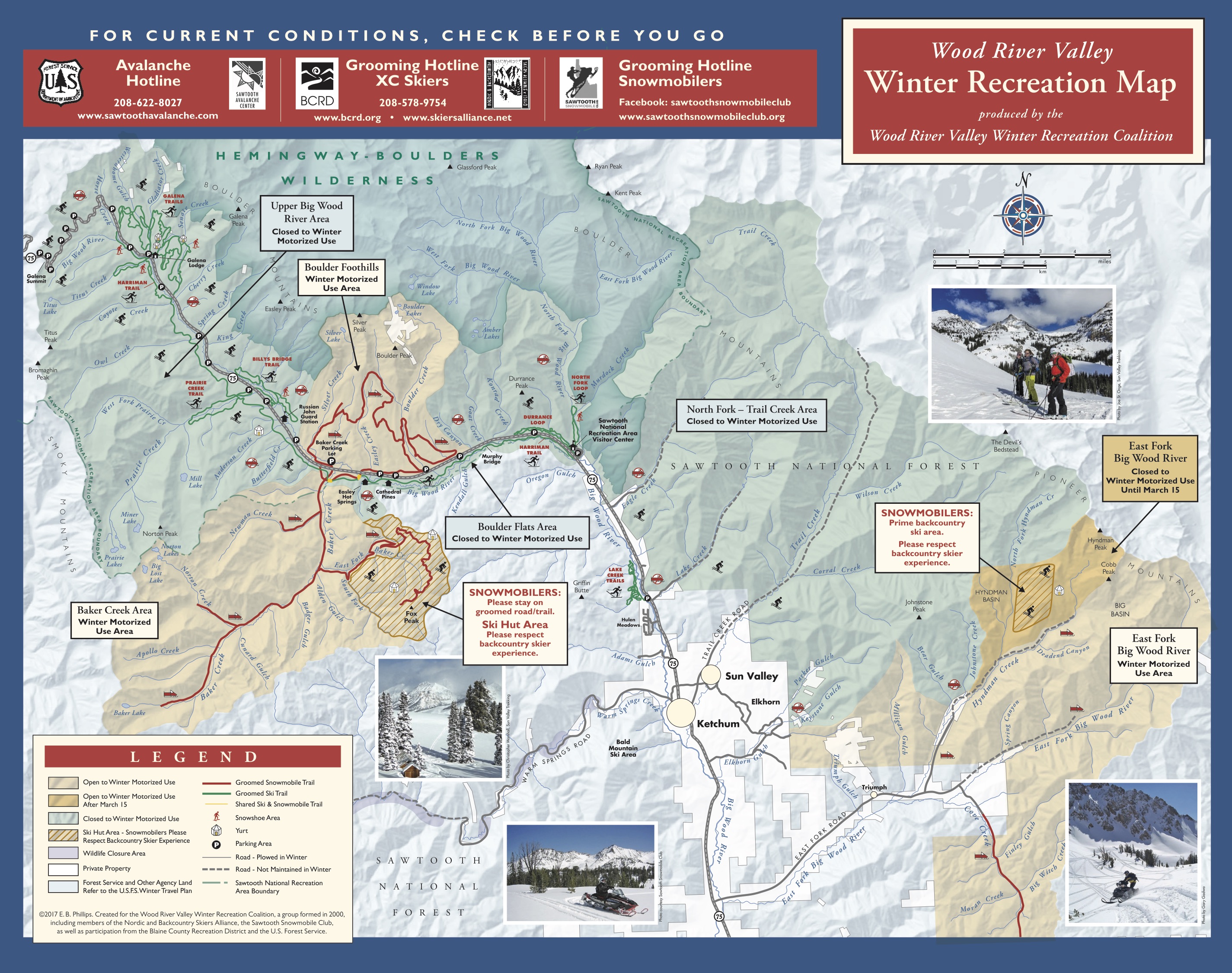Karl Malone Powersports HaileyNeed for speed? Craving the sights of jagged snow-capped peaks? Sun Valley sledders do too. With the enormous and vast swath of carefully zoned Forest Service managed backcountry terrain surrounding the area, snowmobilers can enjoy the ranges and rarely see another group of riders. It’s a hidden gem for experienced rippers who can navigate the high elevations yet still memorable for those relegated to the groomed trails. Some folks even strap their skis to the sleds to access deeper and more remote backcountry skiing. The beauty of our riding mecca is ease of access for all ability levels from guided trail rides to technical side-hills through tight trees to deep powder meadows. Sun Valley is a place for sledders to seek out. What we ask in return is that you know where the designated snowmobile access points are and continue to be good stewards to the multi-use resource.

photo: Amy David | rider: Jeremy Lato
Now that you’re fired up to venture to Sun Valley for some snowmobiling action, we’re going to give you the run-down on the basics for snowmobiling out here in Sun Valley, Idaho.
Rentals and Guides
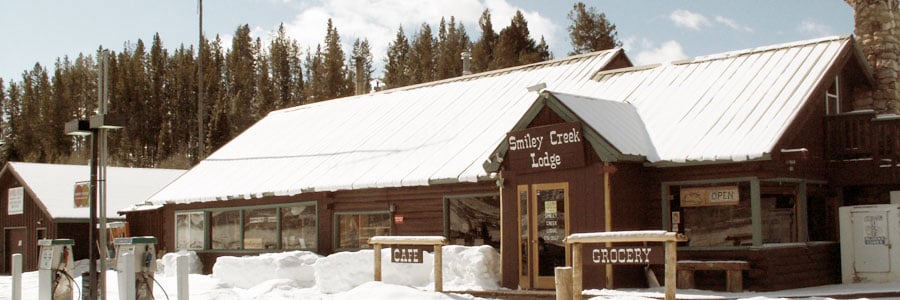
photo: Smiley Creek Lodge
Smiley Creek Lodge is the Sawtooth Valley hub for snowmobilers. This mountain lodge offers cozy and comfortable rooms, delicious food, and is located at the starting point for 170 miles of groomed trails. An array of snowmobile rentals are available for full or half day adventures and experienced guides are eager to show guests the powder filled meadows and serene vistas. If you already have a handle on the throttle, know how to navigate a map and are ready to explore on your own, simply rent your sled, acquire some local insider tips to the area, and venture off into the breathtaking Sawtooth Valley. Click here to reserve and for pricing details.
Sled Shops – Service, Gear, Expert Advice
Karl Malone Powersports Hailey is the main snowmobile shop located in Hailey. This is the closest place to go for service, repairs, and picking up new parts or gear. As a Polaris and Timbersled dealer, the fellas at Woodside will happily get you set up with a new or used snow pony!
Places to Fuel Up
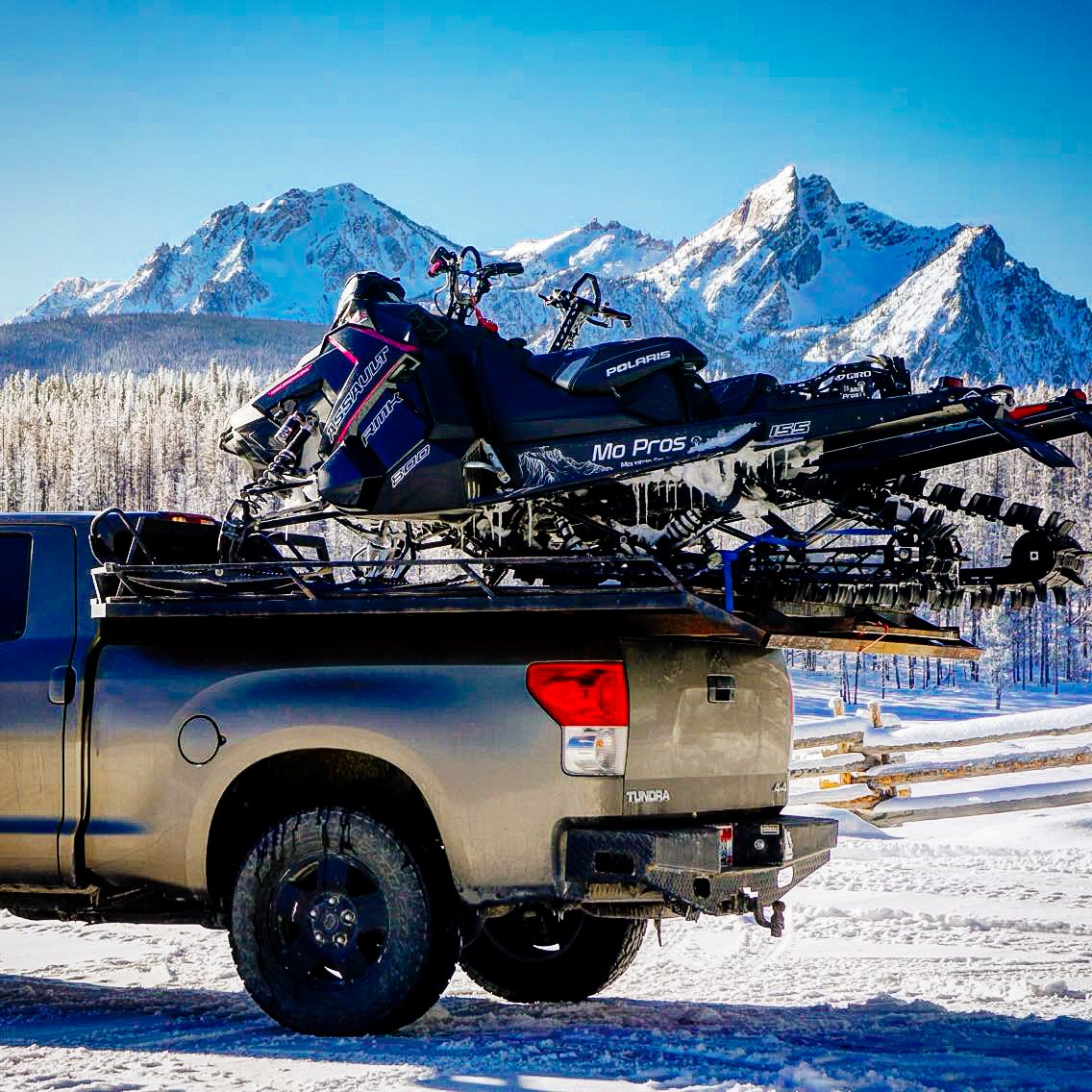
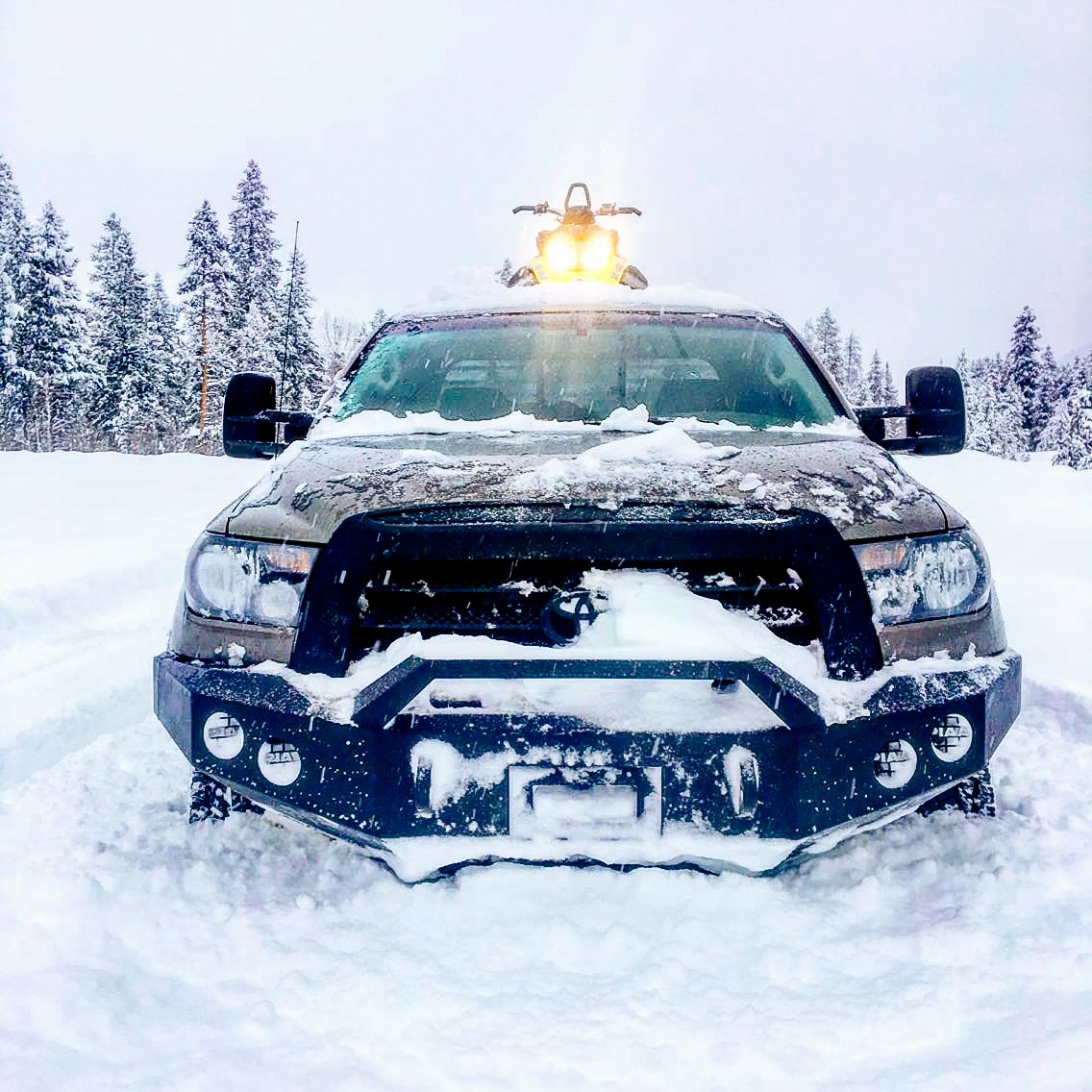
photos: Jeremy Lato
Keep an eye out for several gas stations with easy to pull through pumps. Basecamp stations are spread along the main streets Bellevue, Hailey and Ketchum and are easy to drive through with large trailers. Stanley and Smiley Creek both have gas stations with open space for parking your rig before a big day of riding.
Where to Ride – Access Zones, Restrictions, Maps
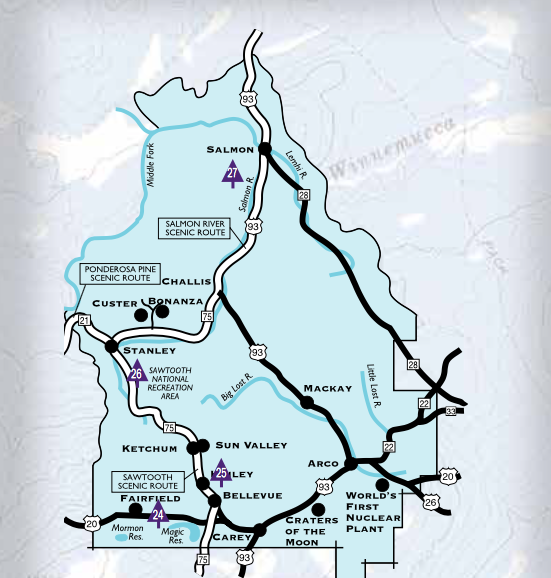
photo: Idaho Parks & Rec
Many places are not open to snowmobiles, and it’s recommended to consult the United States Forest Service Snowmobile Regulations for licensing, closures, and other important information as well as the local ranger district for details. It’s also important to note that certain areas are prohibited to winter motorized use until March 15 to protect wintering elk. Below several key access points and riding zones. We also recommend checking the Idaho Parks & Rec snowmobiling informational kit. For specific routes, Google Earth is a good reference point from here.
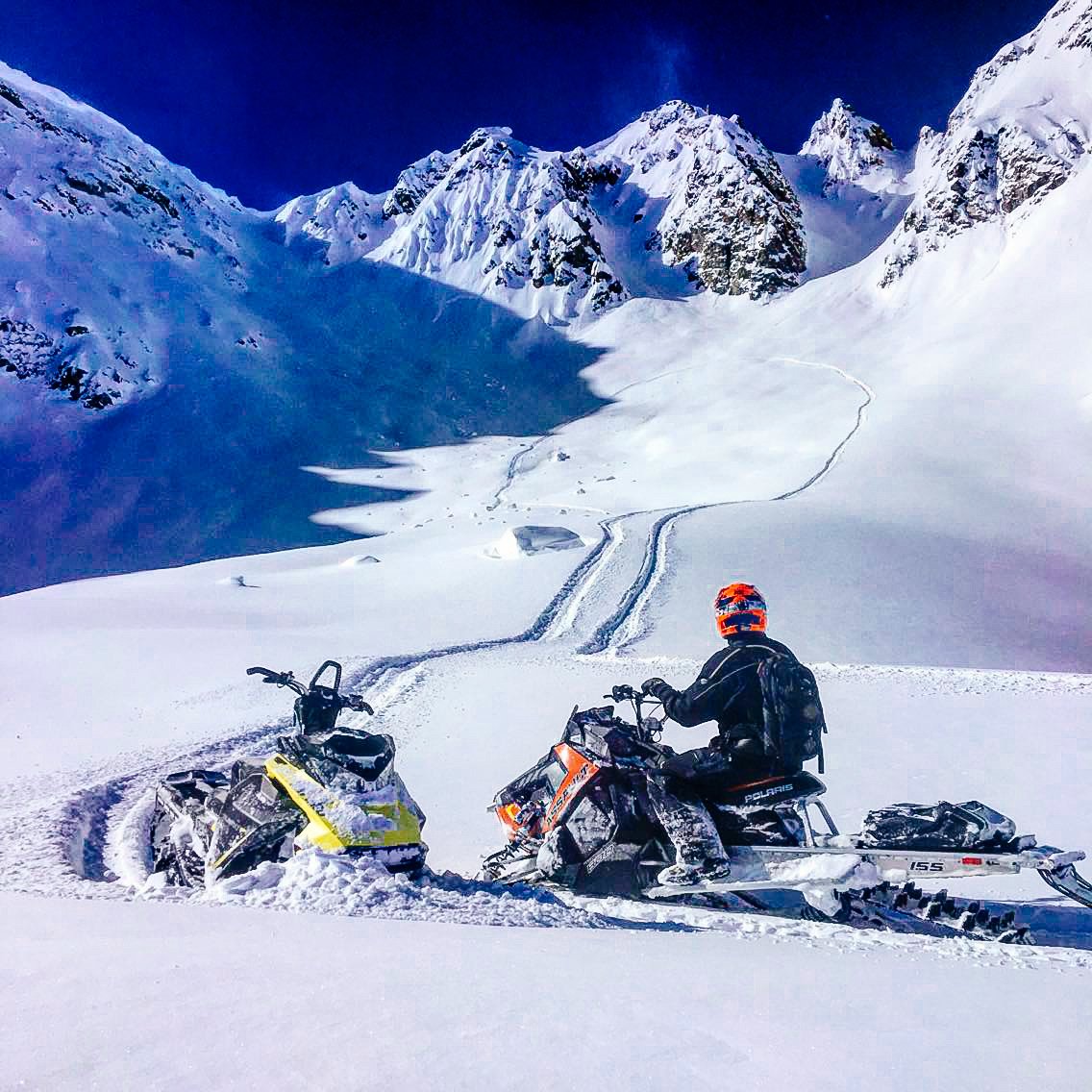
photo: Jeremy Lato
Baker Creek Drainage
- A gateway to the Smoky Mountains, Baker Creek drainage is 10 miles north of Ketchum with a large parking lot on the northeast side of the highway where sledders can unload before crossing the highway to hop on Baker Creek Trail. Before taking off from the parking lot, it’s recommend that you check-in to the beacon park at the north end of the lot for a little practice and to ensure your equipment is properly working. If your backcountry riding skills are tactful and full throttle, there are numerous ridges and drainages which link up to explore revealing remarkable views of the surrounding mountains.
- A slightly lower elevation ride is the groomed trails winding through the foothills of the Boulder Mountains also access from the Baker Creek parking lot.
Wood River Recreation Area
- The Wood River Recreation Area is located three miles west of Hailey with designated areas for off trail riding.
- Consult map for access details.
Smiley Creek and Stanley
- Smiley Creek and Stanley area over Galena Summit host 170 miles of groomed trail and endless options for off-trail backcountry adventures. The Sawtooth National Recreation Area (SNRA) includes 756,000 acres of scenic mountain country with 40 peaks rising over 10,000 feet in elevation. A large portion of the SNRA is protected wilderness area where snowmobiles are prohibited, so be sure to know the areas allowing motor vehicles.
- Pole Creek access is on the east side of the Sawtooth valley after descending from Galena Summit. Open meadows are abundant paired with options to climb into high elevation basins.
- Consult map for access details.
Fairfield Ranger District
- Fairfield Ranger District south of Sun Valley is chalk full with 200 miles of trails and open areas to play in the Fairfield region. There are about 50 miles of groomed snowmobile trails available north of Fairfield and many mountains over 9,000 ft. in elevation.
Sledder Safety & Avalanche Resources

photo: Amy David | rider: Jeremy Lato
Mountain riding is a fast growing activity for North American snowmobilers heading off trail into deeper snow, steeper mountains, and catching thrills in higher consequence terrain. With access to the heart of spectacular mountain terrain comes the added safety concern of avalanches. Avalanche awareness course and carrying the proper equipment is highly recommended. The Sawtooth Avalanche Center offers incredible information about education courses offered, weather forecasts, avalanche danger advisory, and expert advice on the current snowpack for each surrounding mountain range in the area.
Below are five general safety guidelines for riding in avalanche country. For more advice on safe riding in avalanche terrain, click here.
- Get the gear: Ensure everyone has an avalanche transceiver, shovel, and probe on their person and knows how to use them.
- Get the training: Take an avalanche course.
- Get the forecast: Make a riding plan based on the current avalanche and weather forecast.
- Get the picture: If you see recent avalanche activity, unstable snow exists. Riding on or underneath slopes is dangerous.
- Get out of harm’s way: One at a time on all avalanche slopes. Don’t go to help your stuck friend. Don’t group up in runout zones
Now that you’ve got the basics, we’ll see you out there, or maybe we won’t. It is a vast expanse and all.. Maybe we’ll have a better shot at catching you at one of the many hot springs and restaurants waiting for you to kick back and fill the belly after a full day enjoying our national forest covered in a blanket of fresh deep powder…
